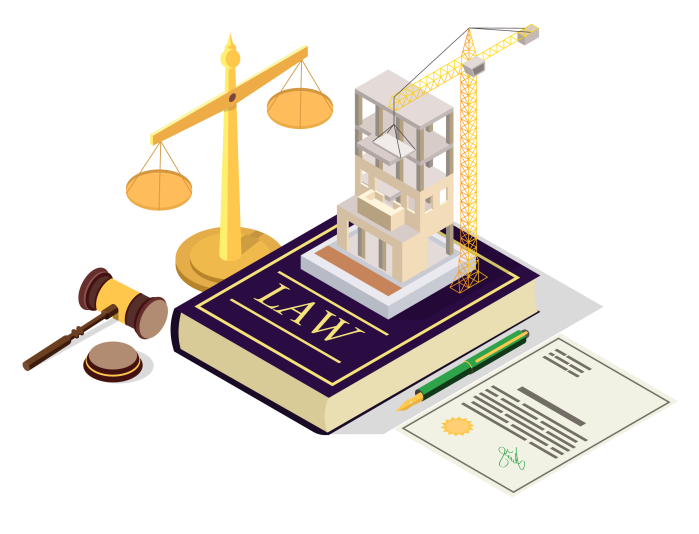Dangerous Cladding - Are You Protected?
- As of mid-2025, thousands of residential buildings across the UK are still awaiting full remediation from unsafe cladding.
- Leaseholders have often shouldered significant financial and emotional burdens as a result, though new protections are now in place.
- Government pledges and commitments from large developers aim to fund and execute remediation works.
- Crucially, leaseholder protections now protect qualifying leaseholders from certain cladding remediation costs, including those relating to lease extensions and sales, as clarified by the Levelling-up and Regeneration Act 2023.
- There's new hope for leaseholders with new mortgage products available for affected properties from a growing list of major lenders.
- Higher risk buildings (HRBs) are over 18 metres (or seven stories) with two or more dwellings, and are treated slightly differently. HRBs built since October 2023 must have a specific digital record to confirm they are safe and can be legally occupied. (The Building (Higher-Risk Buildings Procedures) (England) Regulations 2023).
The fallout from the Grenfell Tower disaster has left thousands of leaseholders trapped in homes with unsafe cladding. If you're facing this challenge, you're likely grappling with complex questions about your property's value, saleability, and mounting costs. This article cuts through the noise to explain your position.
Am I protected from Cladding Remediation Costs?
The question of who pays for rectifying dangerous cladding has caused immense distress and financial uncertainty for thousands of leaseholders.
Thankfully, the legal landscape has undergone significant shifts, with protections now in place for many.
The Building Safety Act 2022 (BSA) introduced protections from the costs associated with remediating historical building safety defects, including unsafe cladding.
This landmark legislation aims to ensure that the burden of rectifying past construction failings falls on those responsible – developers and building owners – rather than innocent residents.
Who qualifies for protections?
You are considered a 'qualifying leaseholder' if:
- Your flat is in a building at least 11 metres high (or five storeys) with identified safety defects (e.g., dangerous cladding) that existed before 14 February 2022.
- On 14 February 2022, your flat was your main home (your principal place of residence), or you owned no more than three UK properties in total.
It's important to note that these protections apply to both current leaseholders and, crucially, transfer to new leaseholders when a property is sold.
What costs do these protections cover?
For qualifying leaseholders, the BSA provides strong protections against:
- All costs for fixing unsafe cladding.
- Costs for non-cladding defects (e.g., timber frames, fire breaks) for buildings where the developer is responsible, or for buildings where the building owner meets specific wealth criteria. If your building owner is not responsible or does not meet the wealth criteria, there may still be caps on what you can be charged for non-cladding defects, typically £10,000 outside London and £15,000 in London.
These protections are designed to prevent freeholders or managing agents from passing on remediation costs to qualifying leaseholders through service charges or other demands.
How are protections applied?
- Developer or Freeholder Action: The primary responsibility for funding and carrying out remediation works rests with the original developer or the current building owner.
- Landlord Certificates: Your building owner must provide a 'Landlord Certificate' to demonstrate whether they, or their associated developer, are responsible for financing the works, or whether the costs can be passed on (and if so, to whom and to what extent).
- Leaseholder Deed of Certificate: As a leaseholder, you may be required to complete a 'Leaseholder Deed of Certificate' to provide information about your property ownership on 14 February 2022. This helps determine if you qualify for protections.
A key enhancement, clarified by the Levelling-up and Regeneration Act 2023, ensures that these leaseholder protections transfer automatically to any new owner when a qualifying flat is sold, or to the new lease in the case of a lease extension.
This means the protection from remediation costs is tied to the flat itself, not just the original qualifying leaseholder.
- Leaseholders protections ensures that you are not liable to pay.
- If you qualify, you will be protected from the financial burden of remediation costs concerning building safety.
- If you're trying to sell, you will need a Deed of Certificate to prove that the leasehold is subject to leaseholder protections.
- Is the freeholder still forcing you to pay for these costs? We can help solve this property challenge.
The Grenfell Tower Disaster
In the early hours of 14 June 2017, Grenfell Tower in North Kensington, West London, suffered a huge fire, which resulted in the deaths of around 100 people. Many more people became homeless as a result.
The fire was most likely caused by a refrigerator catching fire. It rapidly spread when the fire reached the cladding on the outside of the building. This cladding was found to be a huge fire hazard.
Authorities admitted that the unsafe cladding had been fitted in more than 300 properties throughout the UK, including in around 160 social housing tower blocks, and one of the initial scandals after the event was the snail's pace at which work to take down and replace the cladding was carried out. 5 years later, new estimates range from 481 to 9,793 buildings, still clad in dangerous materials that need to be removed, putting lives at risk.
The legal arguments over who should take ultimate responsibility for allowing the cladding to be fitted continue to be hotly contested.
Can you help?
Several charities continue to support the survivors and bereaved families, as well as funding initiatives to raise awareness and prevent a similar tragedy from happening again.
Grenfell United
The Grenfell Foundation
The Grenfell Tower Memorial Commission
Can you get a mortgage or remortgage on a cladded flat now?
Remortgaging involves a valuation of your property; this might be a desktop valuation (remote), but the majority of valuations involve an actual physical visit by a RICS valuer.
This valuation is the lead factor in any lender's decision as to whether they will grant a mortgage and how much they will lend.
Good news: mortgage availability for affected properties
Following new guidance issued by the Royal Institution of Chartered Surveyors (RICS) in December 2022, and further clarified by the April 2025 Joint Industry Statement on Cladding from UK Finance and the Building Societies Association (BSA), significant progress has been made in enabling mortgages for properties affected by cladding issues.
This industry statement also clarifies the reliance on EWS1 forms more than 5 years old and those signed by invalid signatories.
A growing number of major lenders are now offering mortgages on qualifying properties affected by the dangerous cladding crisis. You must be able to provide evidence that any of the following apply:
- 1
Your building will be fixed by the developer (this is known as 'self-remediation');
- 2
You're covered by one of the recognised Government schemes – the Developer Remediation Contracts, the Medium Rise Scheme or the Building Safety Fund;
- 3
You're covered by the leaseholder protections in the Building Safety Act.
If none of these apply to your property, you will likely still face challenges in getting a mortgage.
Our brokers will present the best options available to you, for any type of mortgage, including:
- First-time buyers, home movers and buy-to-lets;
- Employed; self-employed or director mortages;
- Mortgages for non-UK residents or non-UK citizens;
- Bridging loans;
- Bad credit mortgages;
- Guarantor mortgages;
- Joint borrower, sole proprietor mortgages; and
- Absolute, Possessory, Good, or Qualified Title.
The financial realities of cladding
Beyond the immediate safety concerns, the cladding crisis has profound financial implications for leaseholders:
Are you in negative equity?
Negative equity means your property is worth less than the mortgage you owe because its value has fallen since you bought and mortgaged it.
Many leaseholders of flats affected by the cladding crisis have found themselves in negative equity. Property values have plummeted due to the risks and potential remedial costs involved.
This can prevent you from selling, as the sale might not cover your outstanding mortgage, leaving you still owing your lender the difference.
This situation can be particularly devastating in a repossession scenario. If you can stay put, there's no need to panic as long as you can keep making your monthly mortgage repayments.
What are the likely future costs you will face?
Building Control and Fire Safety Regulations require building owners to address unsafe cladding. Although efforts are underway, full remediation across all affected UK buildings will take time.
Historically, freeholders often passed on the costs of unsafe cladding removal and replacement to leaseholders, typically through Section 20 major works, paid via service charges, reserve funds, or sinking funds.
However, for a qualifying leaseholder, the BSA largely protects you from these historical cladding remediation costs. You should not face bills for these specific works. Nonetheless, it’s worth being aware of other potential costs:
- Temporary Measures: While remediation is pending, costs for temporary safety measures like 'waking watches' might still arise if these are not covered by developer or government funds, though efforts are being made to minimise these.
- Non-Cladding Defects: While the BSA covers many non-cladding defects, there can be caps on what you might be charged for these (e.g., £10,000 outside London and £15,000 in London) if your building owner/developer does not meet specific wealth criteria or is not responsible.
- Increased Insurance Premiums: Buildings with safety issues often face higher insurance premiums, which are passed on through service charges.
- Ongoing Service Charges: Regular service charges unrelated to remediation will continue, but ensure they don't include costs that should be covered by BSA protections.
What is an EWS1 Form?
The External Wall System Fire Review certificate, commonly known as an EWS1 form, is a document that assesses the fire safety of a residential building's external wall system, including its cladding.
It's completed by a qualified professional and provides a rating that is often vital for mortgage lenders and when selling your flat.
While not every building requires one, an EWS1 form is most commonly requested for mortgage applications and property sales, particularly in multi-storey buildings where fire safety concerns may exist.
The latest RICS guidance (December 2022) and the April 2025 Joint Industry Statement on Cladding from UK Finance and the Building Societies Association (BSA) have helped clarify when an EWS1 is necessary and how older forms can still be relied upon.
EWS1 Ratings Explained
The form assigns a rating to summarise the fire risk, indicating whether remedial works are required. An A3 or B2 rating typically indicates that remediation is needed, which can affect a property's value and saleability until resolved.
- A1: No combustible materials.
- A2: Combustible materials present, low risk, no works needed.
- A3: Combustible materials present, remedial works required.
- B1: Combustible materials present, low risk, no works needed.
- B2: Combustible materials present, high risk, remedial works required.
What about Help to Buy and Shared Ownership properties?
Help to Buy Equity Loan properties
The Help to Buy (HTB) equity loan scheme has presented challenges for leaseholders in cladded properties. Under the scheme, your equity loan (up to 20% or 40% in London) is subject to increasing interest after five years, and the repayment amount is tied to the property's current market value at the time of repayment.
However, Homes England, which manages the scheme, has faced criticism for changes to the rules. For many HTB leaseholders in affected buildings, this has meant being unable to sell at a reduced rate to cash buyers because Homes England often requires sales to be at an 'unaffected market value'.
This has left many trapped, unable to sell or even sublet, while still paying increasingly high interest on an equity loan that hasn't decreased in real terms alongside their property's diminished value.
Shared Ownership properties and Staircasing
If you own a shared ownership flat, your ability to staircase (increase your share of ownership) will largely depend on your lender's willingness to lend based on a current valuation of your property.
If you can fund your staircasing with cash, there's nothing to stop you from increasing your share. Additionally, if you are a council tenant, your Right to Buy remains mostly unaffected, potentially costing less to buy your flat than before. However, the challenge of securing a mortgage remains.
What are your options and next steps?
- Get a current valuation to gauge your equity, especially if you suspect negative equity. Online resources and professional valuations can help.
- Talk to your current lender about their policy. If they can't help, a specialist Mortgage Broker can guide you to lenders now supporting cladded properties. Don't face this alone – a free consultation can make all the difference.
- Confirm if you qualify under the Building Safety Act 2022. Request your Landlord Certificate and prepare your Leaseholder Deed of Certificate to confirm your protection from historical remediation costs.
- While the BSA protects qualifying leaseholders from most historical cladding costs, stay vigilant. Review service charges to ensure they don't include expenses covered by developers or government funds, or charges exceeding statutory caps for non-cladding defects.
- Keep in close contact with your building management or freeholder for updates on cladding remediation works and their expected timelines.
- The Building Safety Act provides significant clarity, but its implementation is ongoing. Keep an eye on trusted legal and policy updates to understand any evolving nuances.
When buying with a mortgage, your lender will appoint their own surveyor for a mortgage valuation.
This is done for the lender, but the borrower usually pays for it. An independent valuation report will allow you to compare results and give you an insight into the condition of the property from a buyer's perspective.
- Local, MRICS, and FRICS-accredited surveyors.
- Fixed, competitive fees.
- Availability from 17/12/2025(i).
- We can solve any property challenge.
Andrew started his career in 2000 working within conveyancing solicitor firms and grew hands-on knowledge of a wide variety of conveyancing challenges and solutions. After helping in excess of 50,000 clients in his career, he uses all this experience within his article writing for SAM, mainstream media and his self published book How to Buy a House Without Killing Anyone.
Caragh is an excellent writer and copy editor of books, news articles and editorials. She has written extensively for SAM for a variety of conveyancing, survey, property law and mortgage-related articles.












